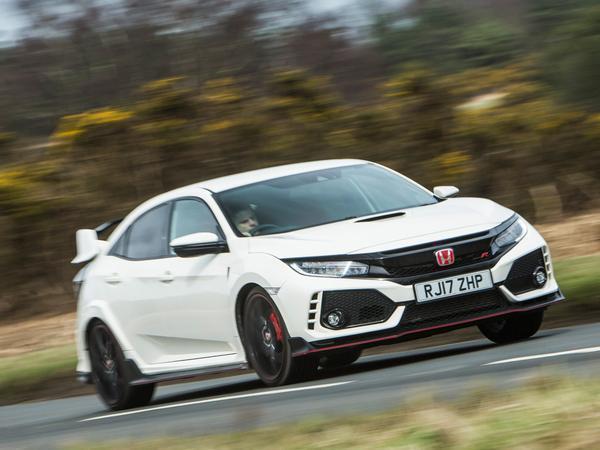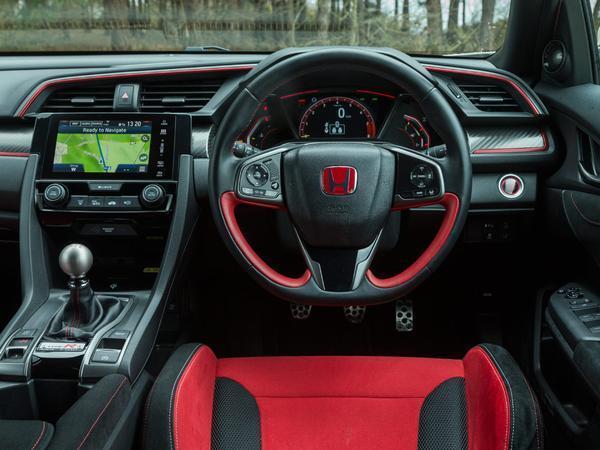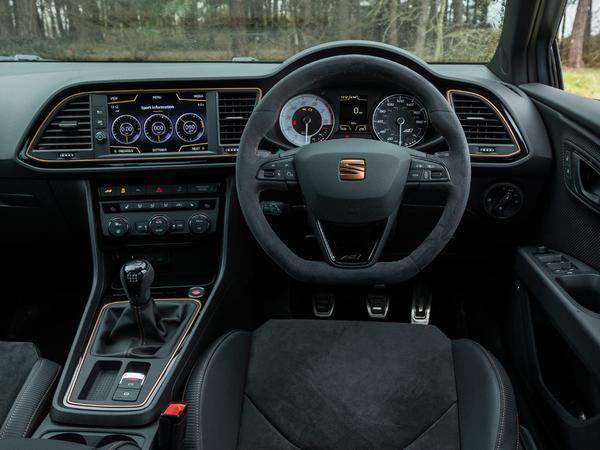SEAT Leon Cupra R vs. Honda Civic Type R
Does the most powerful Leon ever have what it takes to topple the current front-wheel drive champion?

Of course, that's by-the-by, because (for now) the Leon Cupra - despite being the model most associated with the name - has, for reasons best known to SEAT, nothing to do with brand Cupra. Probably that's a good thing: the long-running hot hatch already possesses heritage and credibility, and doesn't need a superfluous layer of identity plastered on top. So while the deliberately expensive R version serves as a bellwetherfor what's coming round the corner, it isn't necessarily beholden to it (no matter what subliminal messages are being imparted by its copper colour scheme).

Given that the 24 cars coming to the UK are already sold, it's hardly worth passing comment on the desirability of the styling revisions. If there were a 25th customer in two minds about the car, we might point out that the copper highlights are likely to be divisive - then again, we've brought along a Honda Civic Type R to test it against, which is rather like bringing a Jackson Pollock canvas to a gun fight. The GT version starts at £32,995 (£2k cheaper than the Cupra R) and it delivers 10hp more from its 2.0-litre VTEC Turbo unit. It also looks like it looks, which you're either going to put up with or internally veto with a shudder.

The clincher though is the fact that in the Type R, you sit what feels like about a foot lower on far superior (and characteristically red) sport seats. As nice as the Cupra's Alcantara steering wheel is - and no matter how preferable it's infotainment system might be - they're no match for the allure of decent driving position. It's also worth mentioning that the Civic feels about a foot wider (it's actually about 60mm broader than the Leon) which, proportionally speaking, is to the car's advantage. Drive them back to back, and the Leon seems like an overgrown supermini compared to its lower, larger rival.

And the Leon? Well, it does nothing quite so well. It is a measure of the Type R's quality that the Cupra's own Comfort setting - typically thought a decent compromise in the standard model - feels almost blancmange-like compared to the super-stern Honda. Of course you might be willing to sacrifice some vertical stiffness if there was a pay off in ride quality, but the SEAT never quite manages to convince you that its lubberly softness is actually delivering a greater level of bump absorption. For the most part, its own adaptive damping just feels a notch less sophisticated.

The Civic meanwhile has 295lb ft at its disposal and is virtually the same weight as the Leon, but despite having a turbocharger twinned with the VTEC system for a generation now, its own 2.0-litre engine is just not quite as prolific when asked to pull from so close to idle. The Cupra's comparative enthusiasm only serves to highlight the softness of its throttle response, and while it isn't hesitant in the old school Type R mould (there's certainly no 'wait, wait - go!' here), it just doesn't surge forward quite as nimbly as the SEAT, and nor does it attempt a variation on its rival's baritone warble, either.

In this latter respect - specifically the business of nailing the physical connection between driver, car and road surface - there's clear daylight between the two. The Type R's predecessor, the FK2, was self-limited not by a lack of ability, but because it could be driven everywhere at Mach 2 without ruffling so much as an eyebrow. In its follow-up, almost to a fault, you now relish every second; not because you go noticeably quicker, but because Honda has successfully cleaved away at the feeling of detachment with meticulously honed controls and the exacting, talkative chassis to match.

But while the Leon is good enough to let you drive fast, the Type R makes you want to drive fast precisely because it is so good. SEAT hasn't zeroed-in its R model with nearly the same stringency. The Honda gets better across the board as you try harder; the Cupra gamely ups its roll resistance, but doesn't ultimately possess the rigorous steering feel needed to make the advantage meaningful nor the adjustability to make it thrilling. It tends to feel exactly as it is: the most powerful version of an upstanding, affable and unremarkable hot hatch. The Civic feels different. It could hardly be anymore rounded if it were a BB pellet. It feels like it's in the league above. Now if only it looked that way, too...
SPECIFICATION - HONDA CIVIC TYPE R
Engine: 1,996cc, turbocharged 4-cyl
Transmission: 6-speed manual, front-wheel drive
Power (hp): 320@6,500rpm
Torque (lb ft): 295@2,500-4,500rpm
0-62mph: 5.8sec
Top speed: 169mph
Weight: 1,451kg (with fluids and driver)
MPG: 36.7 (NEDC combined)
CO2: 176g/km
Price: £30,995 (£32,995 for GT version)
SPECIFICATION - SEAT LEON CUPRA R
Engine: 1,984cc, 4-cylinder turbocharged
Transmission: 6-speed manual, front-wheel drive
Power (hp): 310@5,800-6,500rpm
Torque (lb ft): 280@1,800-5,700rpm
0-62mph: 5.8sec
Top speed: 155mph
Weight: 1,453kg
MPG: 38.7 (NEDC combined)
CO2: 170g/km
Price: £34,995
Gassing Station | General Gassing | Top of Page | What's New | My Stuff















